New products at Crocus
by Sarah - July 1st, 2010.Filed under: Crocus, New Products.
New items added today at Crocus
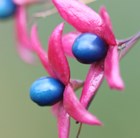
glory tree £12.99
Position: full sun Soil: fertile, humus-rich, moist, well-drained soilRate of growth: averageFlowering period: August to OctoberFlower colour: whiteOther features: dark-green leavesHardiness: fully hardyFragrant, white, star-shaped flowers from August to October, followed by highly ornamental, bright-blue berries. This upright, deciduous shrub is ideal for a shrub or mixed border. Chose a sunny spot next to an entrance or well-used path, incorporating lots of well-rotted leafmould or pine needles into the planting hole.Garden care: Incorporate lots of well-rotted leaf mould or pine needles into the planting hole. In early spring remove any misplaced or frost-damaged branches and mulch with well-rotted leaf mould or pine needles.
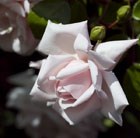
rose New Dawn (climbing) £11.99
Position: full sun or partial shadeSoil: fertile, humus-rich, moist, well-drained soil, including clayRate of growth: fast-growingFlowering period: July to SeptemberFlower colour: pale pearl-pinkHardiness: fully hardySprays of cup-shaped, double, fragrant, pale pearl-pink flowers from July to September and shiny, mid-green leaves. This lovely, repeat-flowering, climbing rose flourishes in both sun and partial shade. One of the best and most vigorous climbing roses, it’s perfect for covering a house or garden wall.Garden care: Before planting shorten thick roots to 25cm (10in) and reduce top-growth to an outward-facing bud 8-15cm (3-6in) above ground-level. Plant during a frost-free spell, incorporating well-rotted organic matter and a balanced fertiliser into the planting hole. Ensure that the ‘bud union’ (the bulge at the base of the shoots) is 2.5cm (1in) below the soil.All our roses are field grown. In October/November they are dug up and potted. However, they will not produce any new roots until spring, so don’t be surprised if the compost falls away from the roots when winter planting. Some suppliers send out ‘bare root’ plants unpotted, but we don’t as it is easier to manage them on the nursery in pots.
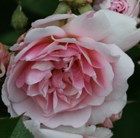
rose Felicia (hybrid musk) £11.99
Position: full sunSoil: fertile, humus-rich, moist, well-drained soilRate of growth: fast-growingFlowering period: June to SeptemberFlower colour: apricot-yellow flushed, light pink flowersOther features: excellent cut-flowersHardiness: fully hardyLarge clusters of sweetly scented, double, apricot-yellow flushed light pink flowers from June to September and dark green leaves. This vigorous, shrub rose is renowned for its long flowering period and strong fragrance. One of the best Hybrid Musk roses, it makes an excellent specimen plant or informal, flowering hedge for an open, sunny site.Garden care: Before planting shorten thick roots to 25cm (10in) and reduce top-growth to an outward-facing bud 8-15cm (3-6in) above ground-level. Plant during a frost-free spell, incorporating well-rotted organic matter and a balanced fertiliser into the planting hole. Ensure that the ‘bud union’ (the bulge at the base of the shoots) is 2.5cm (1in) below the soilAll our roses are field grown. In October/November they are dug up and potted. However, they will not produce any new roots until spring, so don’t be surprised if the compost falls away from the roots when winter planting. Some suppliers send out ‘bare root’ plants unpotted, but we don’t as it is easier to manage them on the nursery in pots.
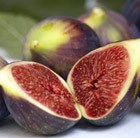
fig £10.99
Position: full sunSoil: will tolerate most soils, except very badly drainedRate of growth: averageHardiness: fully hardyThis deciduous, spreading shrub is highly ornamental, with large, glossy, palmat palmate leaves. It is best grown against a south or south-west facing wall, where, in long, hot summers it will produce an abundant crop of brown, pear-shaped fruit with red flesh. These figs are rich and sweet and available for picking from August to September. An interesting and easy plant to grow, and one of the oldest fruits in cultivation. Garden care: Plant in a 40cm (15in) pot in the ground or in a lined pit to restrict root-growth as unrestricted root growth leads to poor fruiting. Prune in spring when all chance of frost has past. Remove any frost-damaged or weak branches, and thin out shoots to let light in. Some pruning may be required in summer – trim all new shoots back to five or six leaves.Figs are capable of producing three crops of fruit every year, but in our climate it is the tiny little ones that you find tucked into the leaf axils in autumn, that if protected from frosts, will go on to ripen in their second summer. Therefore if you are growing the fig for its fruit rather than its foliage, you should remove any developing fruits that are larger than a pea in autumn, and either cover the crown of the tree with a blanket of frost fleece or try to gently pack it with straw. This will keep them snug and warm throughout winter and push the plants energy into the development of the young fruits, which should grow into fully ripened figs next year.
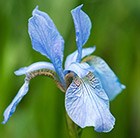
Siberian iris £7.99
Elegant stems of sky-blue flowers with dark blue-veined lower petals in May and June. This beautiful Siberian iris is ideal for a waterside planting or towards the back of a moderately fertile, well-drained mixed or herbaceous border. The slender, strap-shaped leaves contrast well with the sculptural corrugated leaves of the blue-leaved Hosta ‘Blue Wedgwood’.Position: full sun or partial shadeSoil: well-drained, moderately fertile, neutral to slightly acid soilRate of growth: averageFlowering period: May and JuneFlower colour: sky-blueOther features: all parts of the plant cause severediscomfort if ingested; contact with the sap may cause skin irritationHardiness: fully hardyGarden care: Plant shallowly with the upper part of the rhizome sitting on the surface of the soil, incorporating a low-nitrogen fertiliser in the planting hole. After planting remove the upper most third of the leaves to minimise the incidence of wind rock. In exposed areas stake with bamboo canes in early spring
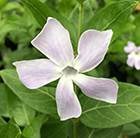
periwinkle £7.99
Position: full sun to full shadeSoil: tolerant of most soilsRate of growth: average, non-invasiveFlowering period: April-June and then August- SeptemberFlower colour:powder blueHardiness: fully hardyNot to be confused with some of the coarser forms, this selected Vinca produces pretty star-shaped flowers of pale blue on arching stems. There are two seasonal flowering peaks; the first in spring, then again in late summer, but one can enjoy a light scattering of flowers almost continuously between these peiods. The shiny, oval leaves are reliably evergreen, creating a welcome bright carpet to any shaded planting.Garden care: Trim off old outer foliage in early spring to reveal new central growth which bears the flowers.
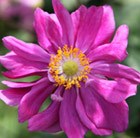
windflower £6.49
Position: full sun or partial shadeSoil: moist, fertile, humus-rich soilRate of growth: average Flowering period: July to SeptemberHardiness: fully hardySpreading dark green, lobed leaves are topped with deep rose-purple, semi-double flowers with rolled or quilled petals, that fade in colour as they age.Garden care: Cut back the stalks after after the flowers have faded, and tidy up old dead leaves in March, then mulch well. Avoid moving the plant since it resents disturbance. Where necessary lift and divide congested clumps in autumn or early spring.
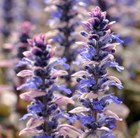
bugle £5.99
Position: full sun or partial shadeSoil: any moist, well-drained soilRate of growth: fast-growingFlowering period: April to MayHardiness: fully hardyA useful plant for the edge of a shady border, ajuga also makes good groundcover as it soon knits together to form an evergreen carpet. This one has multi-coloured, evergreen foliage with wine red splashes and cream margins and dense, upright spires of deep blue flowers in spring. Tolerates sun or shade and poor soils, but does not like to dry out. Garden care: To rejuvenate and minimise congestion, lift and divide clumps in late autumn or early spring every two years.
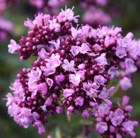
marjoram £5.99
Position: full sunSoil: poor to moderately fertile, well-drained, preferably alkaline soilRate of growth: averageFlowering period: June to SeptemberHardiness: fully hardySmall, round, purple-flushed, inedible leaves are topped, from June to September, by dense clusters of tiny pink flowers borne on red-purple stems. As it matures, the foliage turns dark green. Marjoram is a long-flowering perennial that makes a colourful edging plant for a sunny, well-drained border or herb garden. It thrives on alkaline soil, an important consideration when planting a site recently cleared of builders’ rubble.Garden care: Cut back old faded flower-heads and stems in spring.






